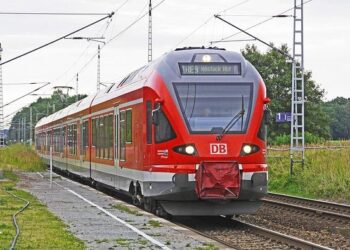Immigration Drives AustriaŌĆÖs Population Growth Amid Shifting Demographics
Austria is undergoing a notable demographic shift, marked by a consistent rise in its population numbers. This growth, however, is largely attributed to immigration rather than natural increases through births. As individuals from various parts of the world establish themselves across Austria, this demographic transformation sparks important conversations about the nationŌĆÖs social cohesion and economic trajectory. This article delves into recent statistics on AustriaŌĆÖs evolving population structure, explores the key factors behind immigration-led expansion, and evaluates both the opportunities and challenges this trend presents for Austrian society.
Immigration as the Pillar of AustriaŌĆÖs Population Expansion
The upward trend in Austria’s population over recent years can be primarily linked to rising immigration levels. While many European countries grapple with aging populations and declining birth rates, Austria stands out due to its capacity to attract immigrants who play a vital role in sustaining demographic momentum. These newcomers hail from diverse cultural origins, enriching societal diversity while also bolstering various economic sectors nationwide.
Key drivers fueling this migration include:
- Robust Job Market: Immigrants are attracted by promising career prospects in flourishing fields such as information technology, healthcare provision, engineering projects, and construction industries.
- Political Stability: Amid global geopolitical uncertainties and conflicts, Austria offers a secure environment appealing to those seeking safety or improved living standards.
- High Living Standards: The country provides excellent healthcare services alongside comprehensive education systems that make it an attractive destination for families and individuals alike.
This influx has reshaped not only major urban centersŌĆöwhere most immigrants initially settleŌĆöbut increasingly influences smaller towns and rural areas facing population decline. Local administrations face the challenge of integrating these new residents effectively by ensuring access to essential public services while fostering social cohesion within increasingly multicultural communities.
| Year | Total Immigrant Population | Growth Rate (%) |
|---|---|---|
| 2015 | 1.3 million | 2.5% |
| 2020 | 1.6 million | 18% |
| 2023 | 1.9 million+ | >20% |
Economic Impact of Immigration on AustriaŌĆÖs Development
The growing immigrant population brings complex effects on Austria’s economyŌĆöoffering both significant advantages as well as presenting certain challenges.
On one side:
– The expanding workforce helps alleviate critical shortages especially visible in healthcare professions amid Europe-wide labor deficits.
– A variety of skills introduced through migration fosters innovation across sectors including tech startups and renewable energy projects.
– Small enterprises benefit from an enlarged consumer base along with entrepreneurial ventures initiated by immigrant communities.
On the other hand:
– Urban housing markets face increased pressure resulting in higher rental costs.
– Public infrastructure such as transportation networks experiences greater demand requiring substantial investment.
– Educational institutions and healthcare facilities must adapt swiftly to accommodate rising populations without sacrificing service quality.
Maximizing these benefits while addressing strains calls for strategic urban planning combined with inclusive economic policies aimed at sustainable growth.
| Economic Advantages Linked to Immigration Growth | Main Challenges Encountered by Communities & Authorities |
|---|---|
| Diversified workforce enhancing productivity Expansion into emerging industries Increased tax revenues supporting public budgets < td >Housing shortages causing affordability concerns Overloaded public transport systems Rising demand for education & health services Fostering Inclusive Societies Through Comprehensive Integration StrategiesSuccessful integration requires multifaceted approaches that promote socio-economic inclusion alongside cultural engagement initiatives. Municipalities together with non-governmental organizations have launched programs designed to bridge gaps between immigrant groups and native Austrians:
|















